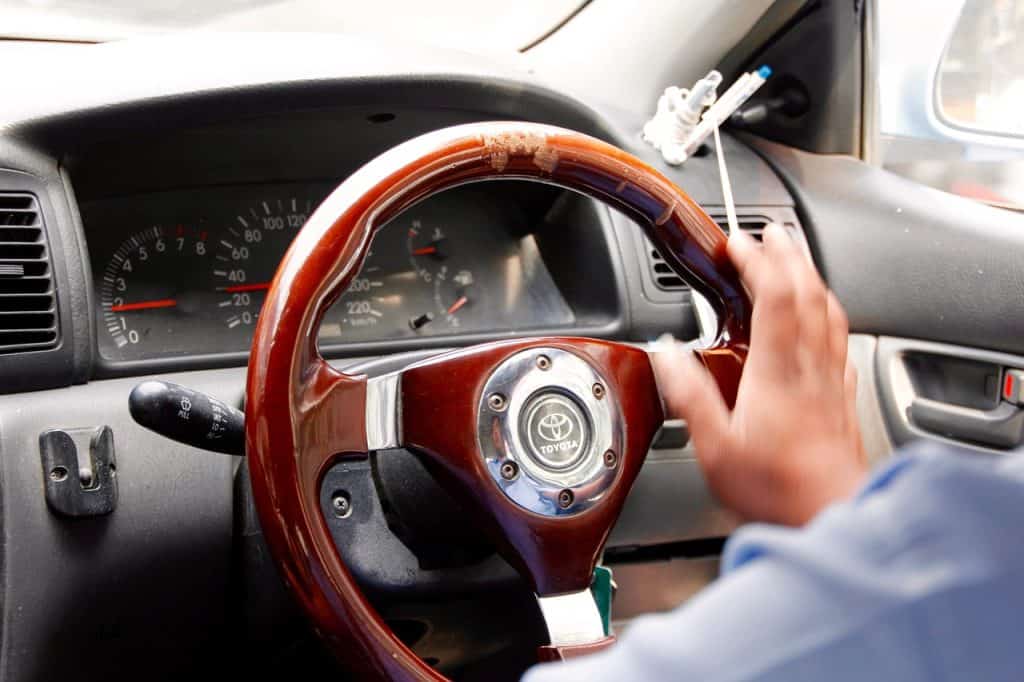Over a period of ownership, most car drivers will become more or less familiar with how their vehicle runs and feels. It’s like a sixth sense that tells the driver when something is not right.
This is especially true with steering ‘feel’. The under-body steering components and, of course, the steering wheel is responsible in part for how a car handles and manoeuvres. These parts have to be dependable.
Is a loose steering wheel dangerous?

Driving a car where the steering wheel or steering column vibrates or wobbles, getting worse the faster the car goes, is a good sign of worn steering components. Worse still is driving when the vehicle does not respond correctly to driver input: Either way, it spells trouble.
Another example is when the car turns more than it should: This is called ‘free play’ and indicates that there’s an issue. Faulty steering is an accident waiting to happen and there could be several reasons for the sensation of a loose steering wheel.
Loose steering wheel symptoms: What causes it?
- Vibration through the steering wheel: There are several causes for this and they all need checking out immediately. A wheel that has struck a kerb heavily can be knocked out of alignment and is often a culprit. Badly worn, damaged or under-inflated tyres can cause the steering to feel heavy and hard to turn, as can faulty power steering.
- Power Steering: If the steering feels heavy there potentially is a leak in the power steering hydraulics, usually caused by a loss of power steering fluid through leaks or damage, or a faulty pump. Modern drivers are used to power-assisted steering; without it the steering wheel is heavy to turn as if the tyres are flat.
- Worn steering parts: Steering assemblies are made up of connecting parts; rods are connected by ball joints for example. As they wear, play is introduced causing them to move about under load, inducing the ‘play’ drivers feel in the steering wheel. Worn parts, where the steering attaches to the wheel may cause the car to ‘wander’ on the road or pull to one side, not holding a straight line. In particular, this may be due to a worn Pitman arm. This is the part that transfers the linear motion of the steering system to the circular motion of the wheel. It’s a vital part that takes a lot of punishment.
- Wheel not attached properly: This is usually due to carelessness or poor workmanship. A wheel may have been removed to attend to a puncture or suspension issue and when replaced the wheel nuts are not sufficiently tightened to the required level, for example, if the wheel nuts are only finger-tight. It’s unusual but it can happen.
Diagnosing a loose steering wheel
There are two types of steering set-ups in common automotive use; rack and pinion and the recirculating ball. The more recent ‘steer-by-wire’ systems found in some of the latest cars remove the connection between the steering wheel and the steering itself.
This means that if the car hits a pothole, say, the driver does feel it through the wheel. However, the loss of that steering ‘feel’ means some drivers find the technology hard to accept.
What is certain though is that any problems with steering usually have the same result and the safest way to deal with it is to take the vehicle to a professional car servicing garage.

If you ask a mechanic, ‘how much play should a steering wheel have’ the answer will be very little; no more than an inch and a half before the wheels start turning.
Technicians will be able to identify steering faults through visual inspection, raising the car on a ramp and checking closely for wear and tear.
They will be able to see if ball joints or tie rod ends, the part that connects the steering to the wheel, have any play at all in them.
At the same time, they will inspect power steering parts and fluids, the movement of the rack and the steering column itself. The only recourse if faults are found is to replace them with new parts immediately.
What does a loose steering wheel feel like?
There are several effects that can occur individually or in combination. The most obvious is the steering wheel shimmy, where the wheel vibrates in the driver’s hands. Alternatively, the car may require constant correction in order to hold a straight line.
There may be a knocking noise over rough road surfaces caused by looseness in a steering component. The steering may feel super-heavy because of faulty power steering; the car may turn further than is required through driver input.
Essentially, any of these occurrences requires prompt attention and can be avoided by regular car servicing and tyre checks, although owners should not wait until this annual event to effect repairs or renewals. These items are also checked when the annual MOT test is carried out.
How much does it cost to fix a loose steering wheel?
All car owners are very well aware of car costs these days. The annual service and MOT test are usually a set fee but, inevitably, there are often extra costs for replacement parts and the like.

The cost of parts varies enormously: A power steering pump may cost £90 for a city car or £400 for a prestige vehicle. These are perhaps things to consider when budgeting for a vehicle. The same principle applies to steering system parts like track rods or ball joints.
There are also garage fees to factor in. It doesn’t hurt to repeat that regular servicing helps minimise those nasty surprises and, of course, ensures that the car is safe to drive.
Summary: Should I be worried about a loose steering wheel?
Yes, is the short answer. We ferry our families about; we drive for business when reliability is paramount and we have a duty of care to other road users. It is all too easy to say, ‘I’ll see to it later’, but that is a slippery slope.
Steering that requires constant adjustment by the driver to maintain a line; steering that vibrates through the wheel or slow parking turns where the tyres feel stuck to the ground all indicate a fault. Don’t delay: get it fixed.
